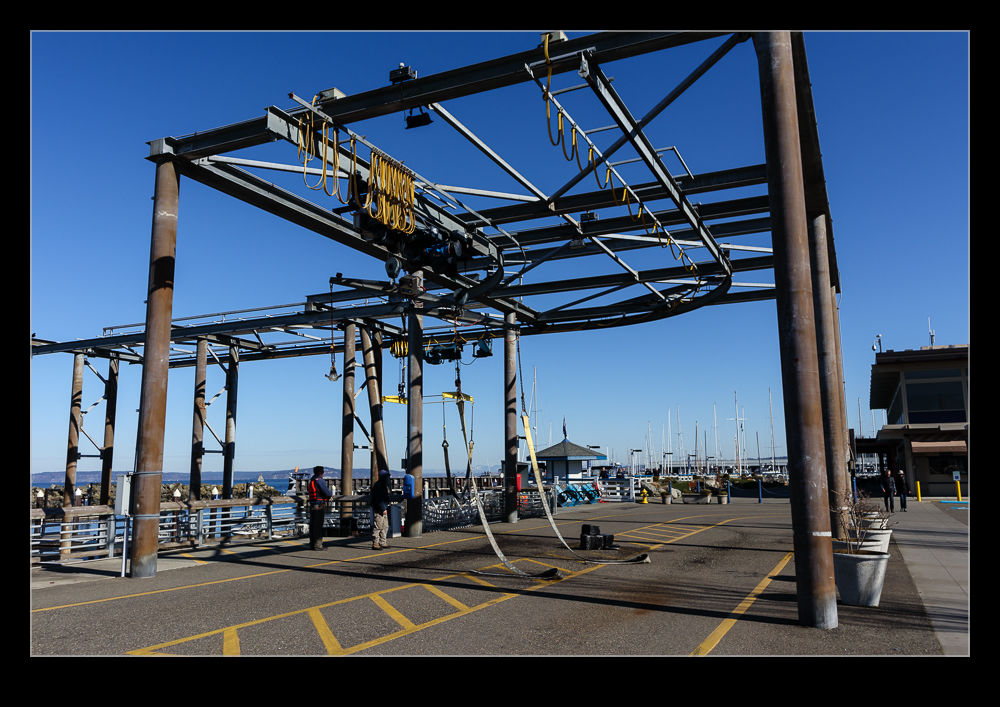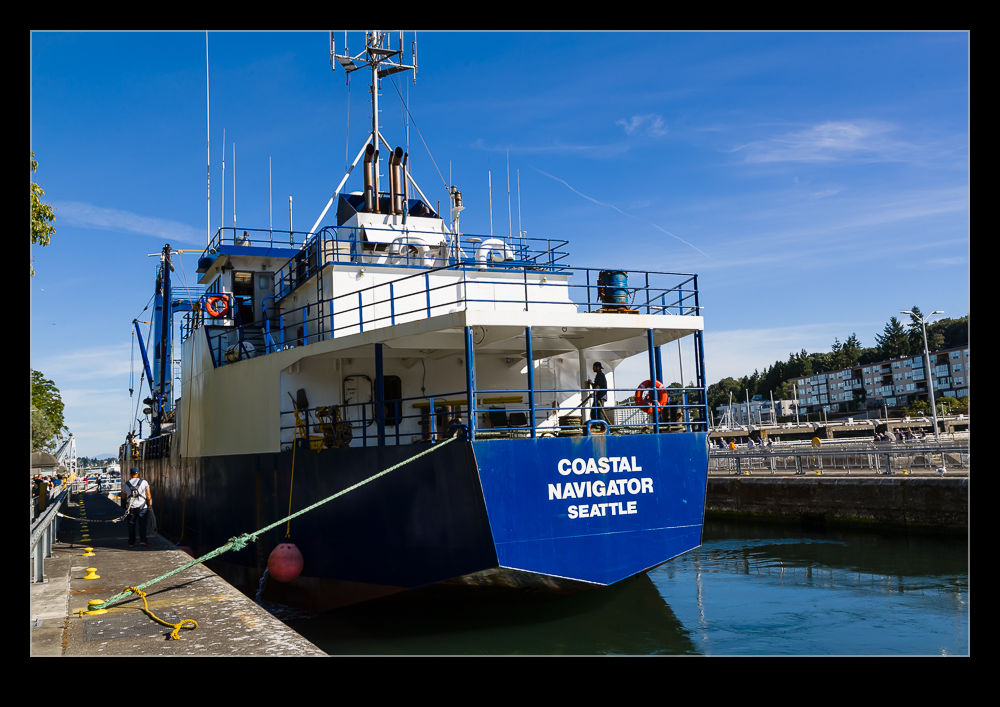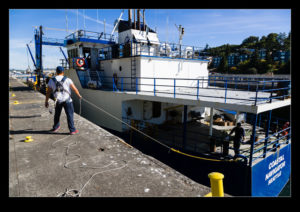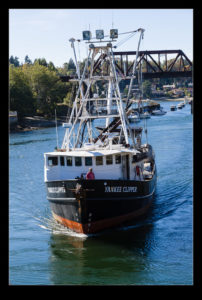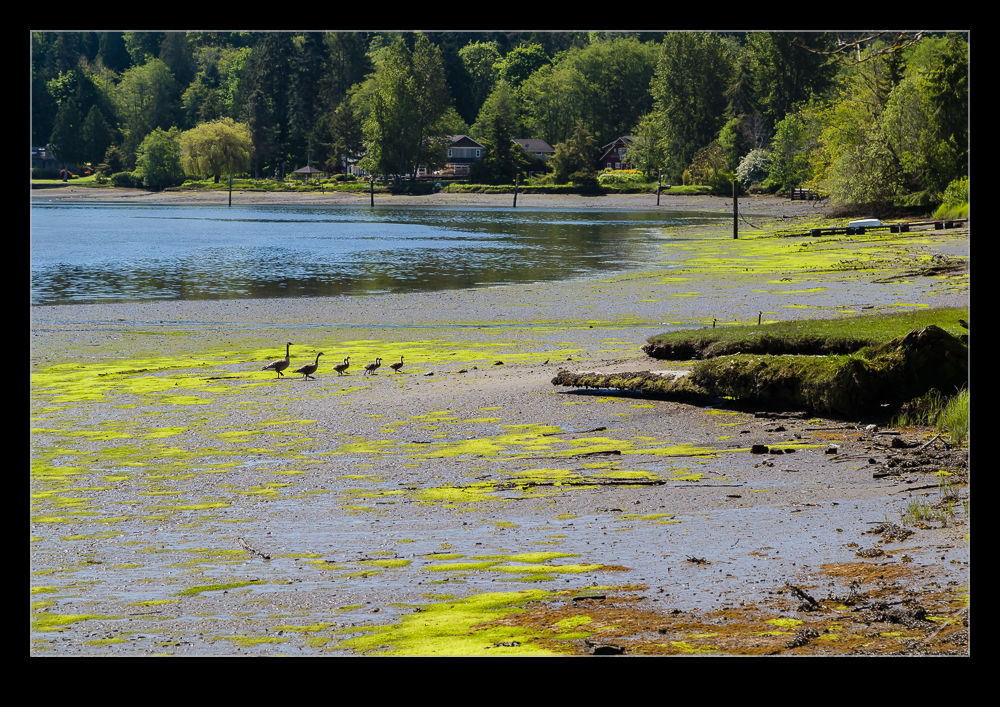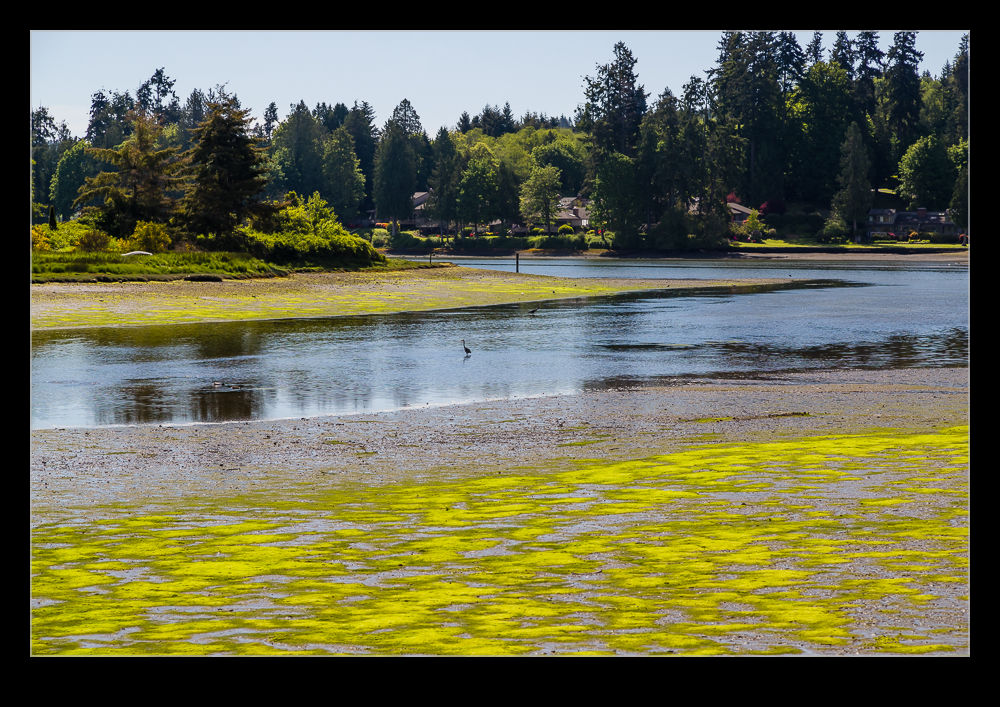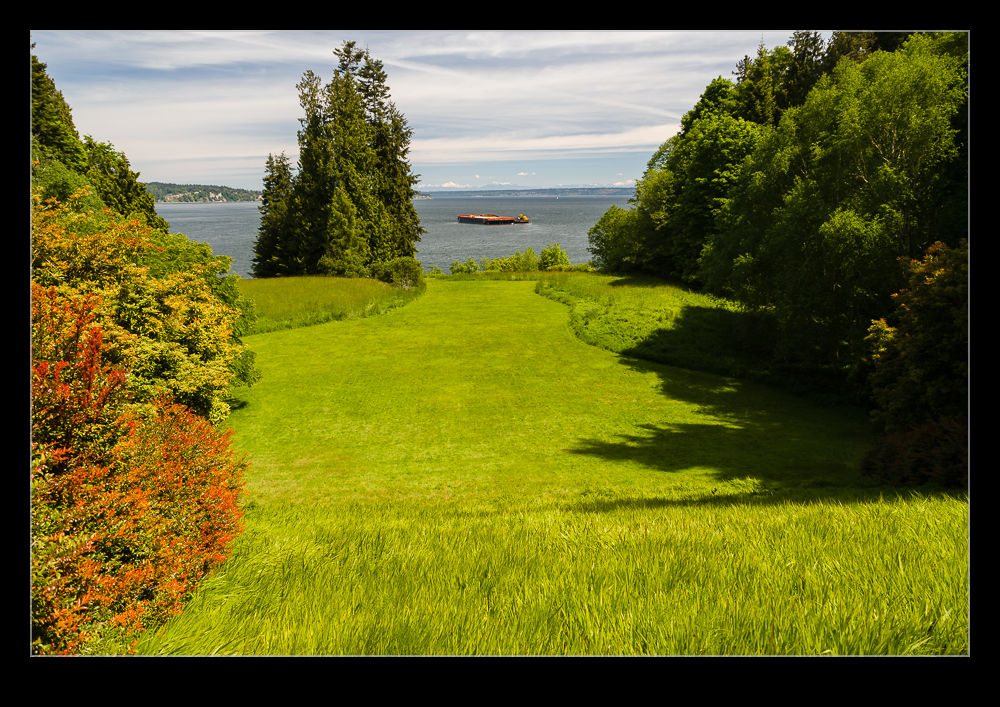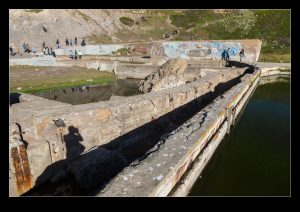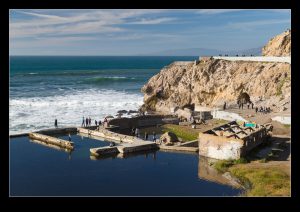 This was something my Mum spotted as we walked around Snoqualmie. The water droplets that had fallen on the leaves of the plants were really catching the light. From a distance they glistened like jewels on the leaf surface. Even closer up, they still sparkled.
This was something my Mum spotted as we walked around Snoqualmie. The water droplets that had fallen on the leaves of the plants were really catching the light. From a distance they glistened like jewels on the leaf surface. Even closer up, they still sparkled.
Tag Archives: water
Turbulence in the Channel
 When the bridge was built over Deception Pass, it provided a reliable method of crossing off Whidbey Island. Prior to the bridge, a boat was needed. I was there on a rough day – the weather was lovely – but the current running through the pass was pretty impressive. Watching the boats fight it made the flow very apparent. Closer to the shore, the current would churn up the water to create standing waves a short distance away from the beach. It looked like the sort of thing that could easily overwhelm a smaller craft if you didn’t know exactly what you were doing.
When the bridge was built over Deception Pass, it provided a reliable method of crossing off Whidbey Island. Prior to the bridge, a boat was needed. I was there on a rough day – the weather was lovely – but the current running through the pass was pretty impressive. Watching the boats fight it made the flow very apparent. Closer to the shore, the current would churn up the water to create standing waves a short distance away from the beach. It looked like the sort of thing that could easily overwhelm a smaller craft if you didn’t know exactly what you were doing.
Putting Your Boat in the Water
 While walking along the shore in Edmonds, we passed the marina and the loading area for the boats. They had a boat lift for the smaller boats to be taken off trailers and put in the water. A guy brought his boat along just as we got there so I had to watch the process. The two guys running the lifts clearly knew what they were doing but the guy insisted on explaining it all to them. They handled it with good grace.
While walking along the shore in Edmonds, we passed the marina and the loading area for the boats. They had a boat lift for the smaller boats to be taken off trailers and put in the water. A guy brought his boat along just as we got there so I had to watch the process. The two guys running the lifts clearly knew what they were doing but the guy insisted on explaining it all to them. They handled it with good grace.
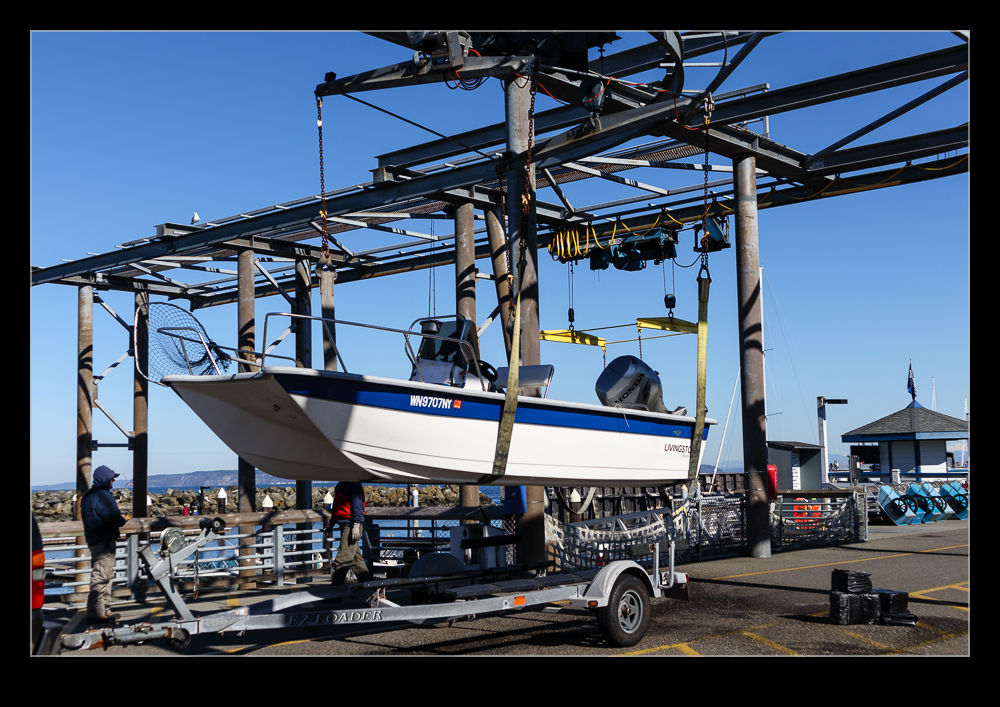 The lift had a track system that turned through ninety degrees. There were two lifts in parallel if the demand was there. The trailer was driven into position and the lifting straps were brought around. They were then passed under the boat and it was lifted up. Once it was clear of everything, the whole assembly motored along the rails, around the corner and out over the dock. It was then a simple process to lower it down into the water and then move it away.
The lift had a track system that turned through ninety degrees. There were two lifts in parallel if the demand was there. The trailer was driven into position and the lifting straps were brought around. They were then passed under the boat and it was lifted up. Once it was clear of everything, the whole assembly motored along the rails, around the corner and out over the dock. It was then a simple process to lower it down into the water and then move it away.
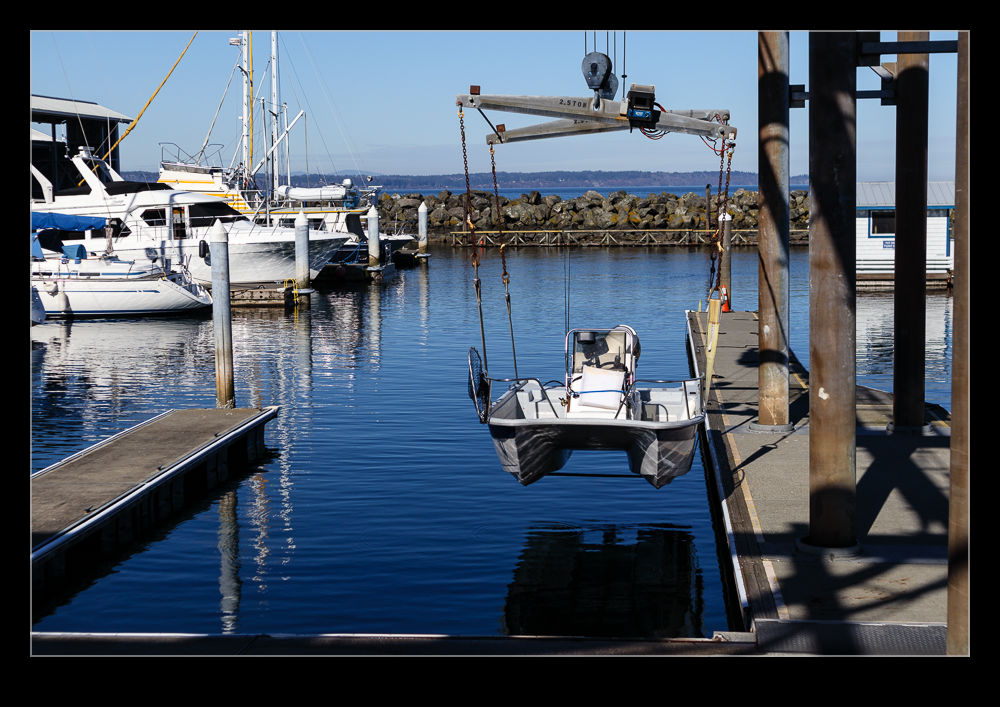 This was fine for boats of a certain size. If you wanted to put anything larger into the water, a far larger rig was required but that wasn’t needed while we were there so I didn’t get to watch it. In my younger days living in Cowes, I got to see those lifts at work a lot.
This was fine for boats of a certain size. If you wanted to put anything larger into the water, a far larger rig was required but that wasn’t needed while we were there so I didn’t get to watch it. In my younger days living in Cowes, I got to see those lifts at work a lot.
High Tide Through the Drains
The tide was very high when we got the parade in Cowes. The water level was just below the street level. Naturally, there was some swell, even though we were inside the harbor wall. This meant the water was pushing back up through the drains that normally take water from the street down to the sea. The water would force itself back up through the drains. Sometimes it was just a small amount of water but the bigger waves resulted in a bit more flow back out of the drain. Video is the best way to show this. The metal of the drain cover had the level of corrosion you would expect for something with this proximity to the sea!
The Commercial Craft Have Precedence
 I learned something new about boat traffic while at the locks in Ballard. There is a clear rule structure about which types of boats get precedence when traversing the locks. Priority goes to government boats and emergency services. Then scheduled commercial boats followed by unscheduled commercial boats before you start to get to the pleasure craft that make up a big chunk of the traffic. One of the boats had tried to enter the lock and they got a loud verbal warning that they had jumped the traffic lights and that a commercial craft was going ahead of them.
I learned something new about boat traffic while at the locks in Ballard. There is a clear rule structure about which types of boats get precedence when traversing the locks. Priority goes to government boats and emergency services. Then scheduled commercial boats followed by unscheduled commercial boats before you start to get to the pleasure craft that make up a big chunk of the traffic. One of the boats had tried to enter the lock and they got a loud verbal warning that they had jumped the traffic lights and that a commercial craft was going ahead of them.
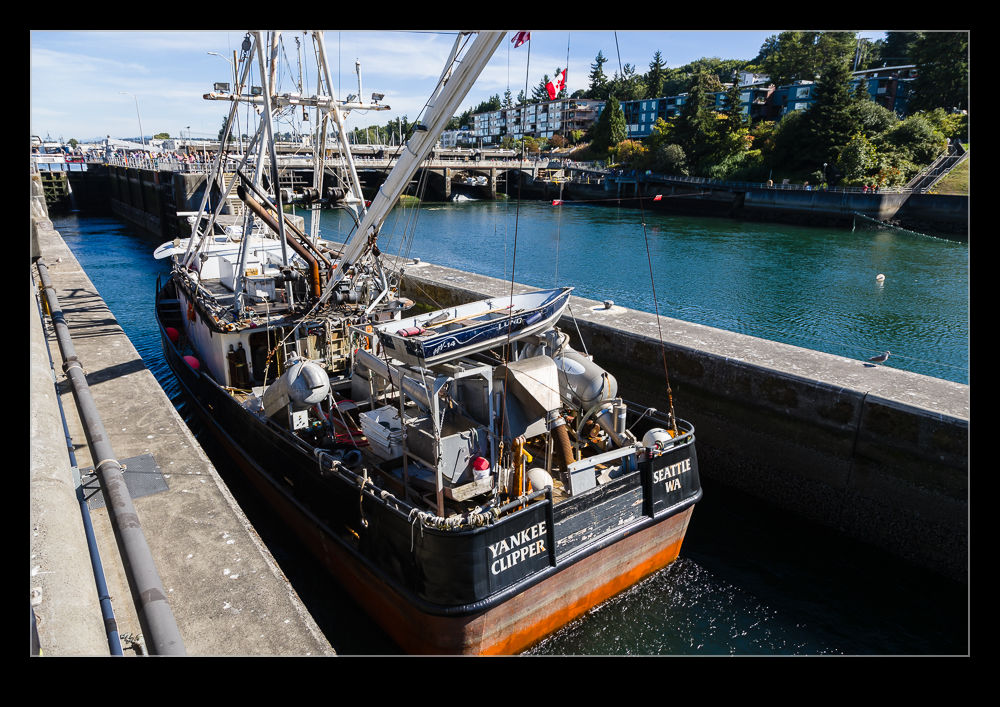 After hearing this, I chatted with one of the lock staff and he explained the way in which things are prioritized. The boat that first demonstrated this was a fishing vessel that went through the smaller lock and was a pretty snug fit (although the crew didn’t seem to even pause when running it in to the lock). The other commercial vessel that came in was substantially larger. It was directed to the main lock while the smaller traffic continued to use the smaller one. Seeing such large vessels come through and the change in perspective from when they were below you as they entered to being so much higher when they left was quite impressive.
After hearing this, I chatted with one of the lock staff and he explained the way in which things are prioritized. The boat that first demonstrated this was a fishing vessel that went through the smaller lock and was a pretty snug fit (although the crew didn’t seem to even pause when running it in to the lock). The other commercial vessel that came in was substantially larger. It was directed to the main lock while the smaller traffic continued to use the smaller one. Seeing such large vessels come through and the change in perspective from when they were below you as they entered to being so much higher when they left was quite impressive.
Hiram M Chittenden Locks
 Just north of the center of Seattle is Ballard. Aside from being an interesting area with shops, bars and restaurants, it is also home to a set of locks that connect the salt waters of Puget Sound with Lake Union and Lake Washington’s fresh waters. The locks are the busiest in the US with a steady stream of traffic. On the weekend, this is heavily dominated by pleasure craft but commercial vessels are also a big feature. Indeed, while we were there, we found out that there is a hierarchy of which types of vessel get to go through first, even if some of the owners of the small pleasure craft were not up to speed on the rules!
Just north of the center of Seattle is Ballard. Aside from being an interesting area with shops, bars and restaurants, it is also home to a set of locks that connect the salt waters of Puget Sound with Lake Union and Lake Washington’s fresh waters. The locks are the busiest in the US with a steady stream of traffic. On the weekend, this is heavily dominated by pleasure craft but commercial vessels are also a big feature. Indeed, while we were there, we found out that there is a hierarchy of which types of vessel get to go through first, even if some of the owners of the small pleasure craft were not up to speed on the rules!
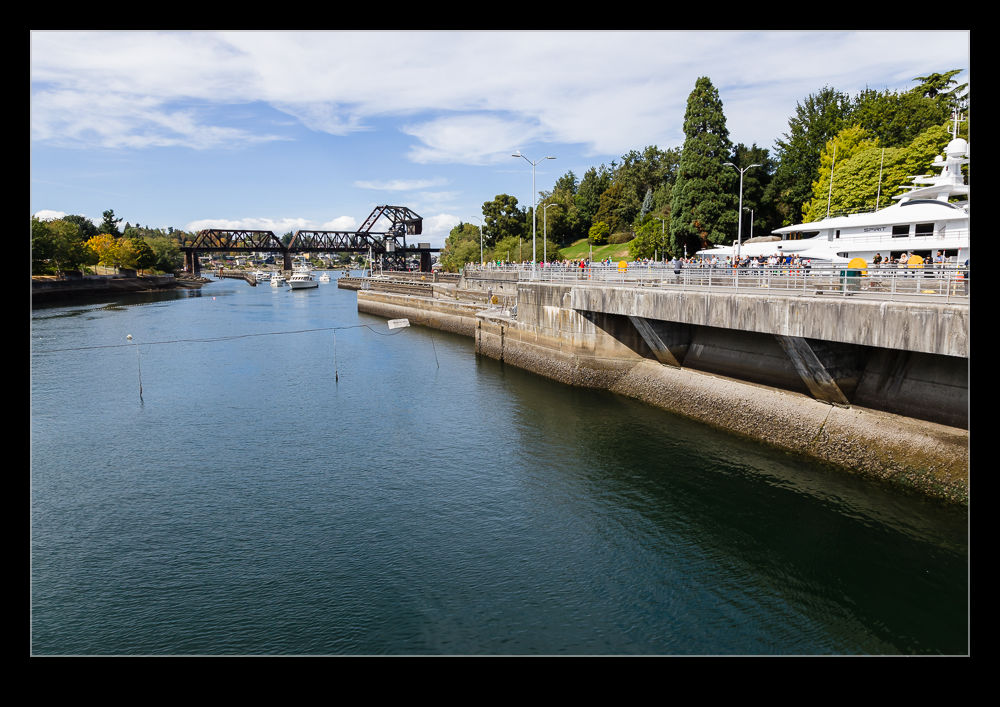 The locks are named after the man who was instrumental in the early phases of their construction. Aside from leading a big construction project, he also was quite visionary in other areas but that will be the topic of another post soon. There are actually two locks. One is a small lock that suits pleasure craft or small commercial vessels. The other is far broader and longer and can be operated with a middle set of gates if less vessels are coming through. It can also take a lot of smaller boats wedged together like a giant game of Tetris when demand is high such as is the case on warm holiday weekends.
The locks are named after the man who was instrumental in the early phases of their construction. Aside from leading a big construction project, he also was quite visionary in other areas but that will be the topic of another post soon. There are actually two locks. One is a small lock that suits pleasure craft or small commercial vessels. The other is far broader and longer and can be operated with a middle set of gates if less vessels are coming through. It can also take a lot of smaller boats wedged together like a giant game of Tetris when demand is high such as is the case on warm holiday weekends.
 The locks are open to the public along with a small botanic garden. You can cross over the top of the gates (although these are rather narrow and can get congested when people decide to stop and hang around rather than keep moving). There is plenty of space along the sides of the locks to watch the boats as they come in and as they rapidly rise or fall when the water levels are adjusted. We obviously weren’t the only ones to find it a relaxing spot to hang out for a while.
The locks are open to the public along with a small botanic garden. You can cross over the top of the gates (although these are rather narrow and can get congested when people decide to stop and hang around rather than keep moving). There is plenty of space along the sides of the locks to watch the boats as they come in and as they rapidly rise or fall when the water levels are adjusted. We obviously weren’t the only ones to find it a relaxing spot to hang out for a while.
Eagle Harbor
 As we drove across Bainbridge Island, we took a road that passed by a very attractive inlet. This was Eagle Harbor. At the time, I only appreciated it at the last moment and we were already passed. However, we did come back along the same road so, this time I slowed down and found a place to pull in and look around. It was a tranquil spot to hang out for a few minutes. However, we were heading to other places so I didn’t stay to appreciate it for long.
As we drove across Bainbridge Island, we took a road that passed by a very attractive inlet. This was Eagle Harbor. At the time, I only appreciated it at the last moment and we were already passed. However, we did come back along the same road so, this time I slowed down and found a place to pull in and look around. It was a tranquil spot to hang out for a few minutes. However, we were heading to other places so I didn’t stay to appreciate it for long.
What a Great View of the Sound!
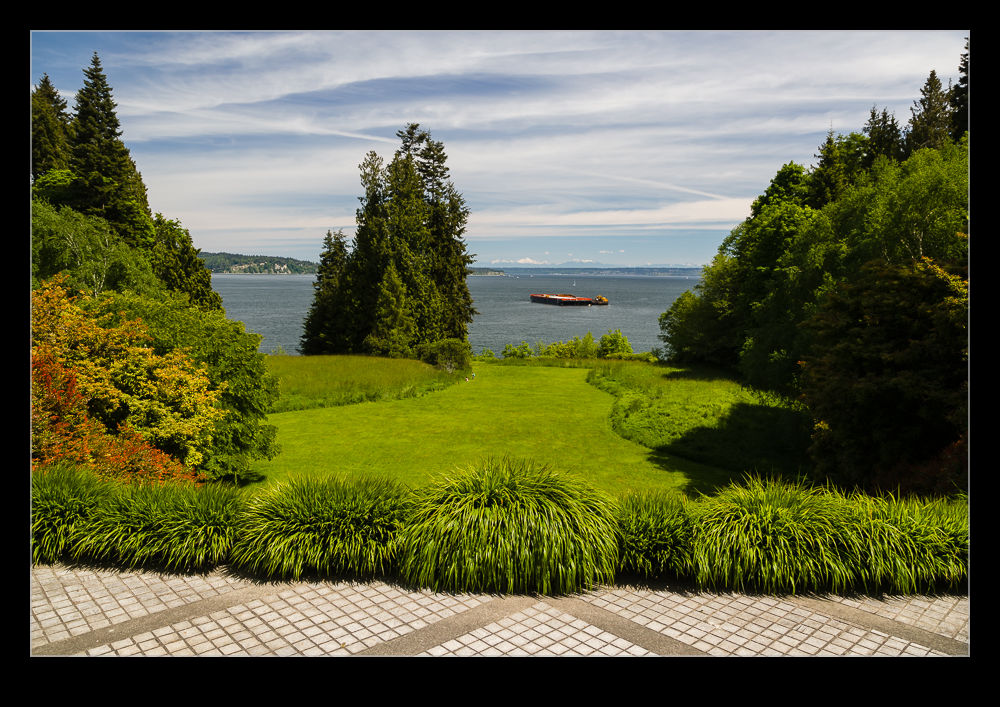 The house at Bloedel Reserve sits up on the hill with the grounds landscaped to provide an unobstructed view down to the sound below. You can imagine the tranquility of sitting on the terrace in the evening, sipping a cocktail and looking out at the water. Unfortunately, at the time of our visit, a large barge was moored a short distance out in the water. I’m sure the view is beautiful but, with a barge plonked in the middle of things, somehow the delightful nature of the scene is a little compromised!
The house at Bloedel Reserve sits up on the hill with the grounds landscaped to provide an unobstructed view down to the sound below. You can imagine the tranquility of sitting on the terrace in the evening, sipping a cocktail and looking out at the water. Unfortunately, at the time of our visit, a large barge was moored a short distance out in the water. I’m sure the view is beautiful but, with a barge plonked in the middle of things, somehow the delightful nature of the scene is a little compromised!
Sutro Baths
 A once popular attraction for San Francisco residents was Sutro Baths. Located on the shore looking out into the pacific, the baths were fed by sea water and covered a large area that was enclosed by a glass and iron structure. A railway brought visitors around the cliffs from the city for their day out. Landslides eventually did away with the railway while other entertainment took visitors away and a fire eventually dealt with what was left. However, the underlying structures of the pools are still there.
A once popular attraction for San Francisco residents was Sutro Baths. Located on the shore looking out into the pacific, the baths were fed by sea water and covered a large area that was enclosed by a glass and iron structure. A railway brought visitors around the cliffs from the city for their day out. Landslides eventually did away with the railway while other entertainment took visitors away and a fire eventually dealt with what was left. However, the underlying structures of the pools are still there.
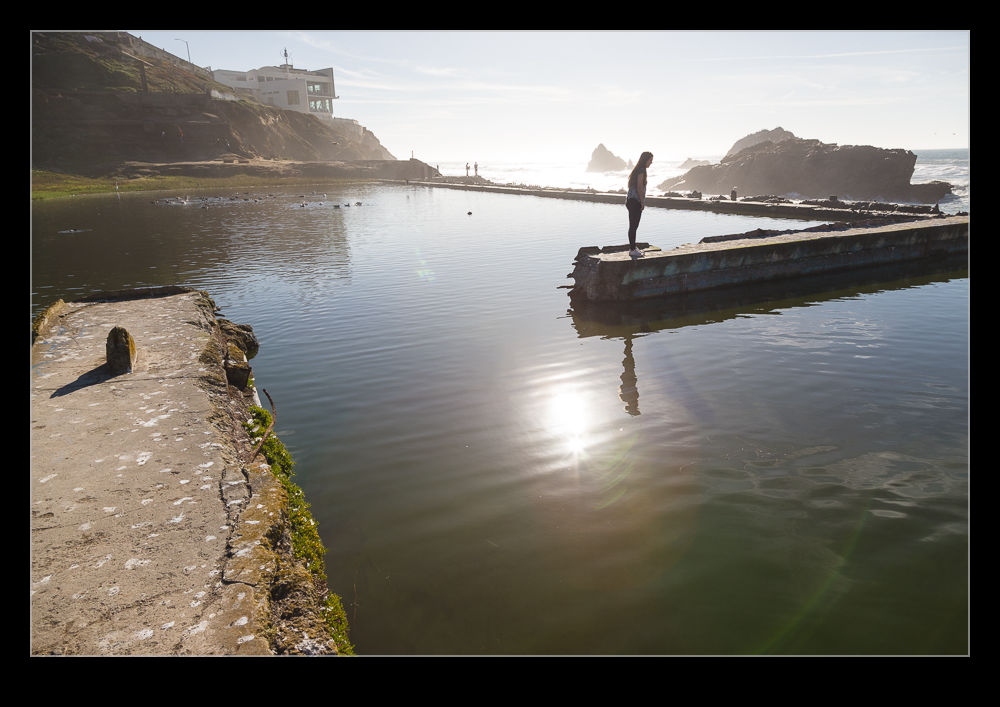 The water is not recirculated as it would have been in the days of operation so some of the pools have a decidedly murky quality to them. The concrete dividers between the pools are still mostly intact so you can walk along them to check the place out. If you aren’t confident with your balance or are likely to be freaked out by having to pass someone coming the opposite way, this might not be for you. If you do lose your footing, you will be damp!
The water is not recirculated as it would have been in the days of operation so some of the pools have a decidedly murky quality to them. The concrete dividers between the pools are still mostly intact so you can walk along them to check the place out. If you aren’t confident with your balance or are likely to be freaked out by having to pass someone coming the opposite way, this might not be for you. If you do lose your footing, you will be damp!
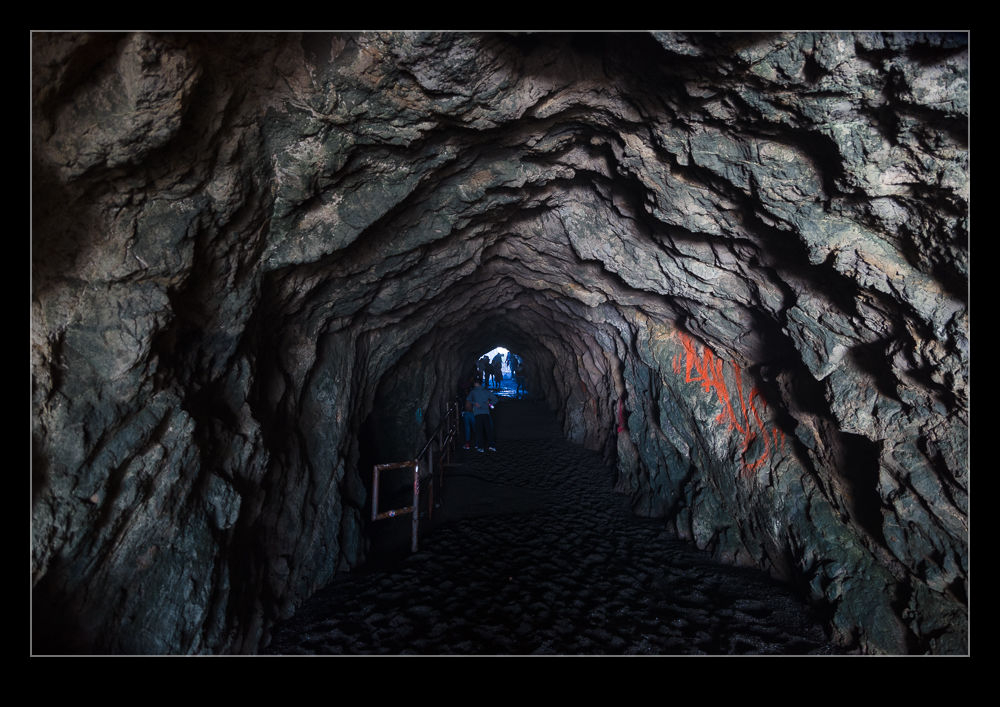 There is a tunnel under the cliffs that comes out amongst the rocks where the waves are crashing up. Halfway along the tunnel is another hole to the shore and, as the waves rush in, you feel the air pressure change briefly. It is certainly cool and damp in there. Given how derelict the place is, it is hugely popular with visitors. Cars circled the lot looking for spaces all the time we were there. The opportunity to hurt yourself was certainly available but, despite the current risk aversion of locations, this one seems remarkably open to allow you to explore and (if you are not careful) do yourself some harm! It’s like being a kid again.
There is a tunnel under the cliffs that comes out amongst the rocks where the waves are crashing up. Halfway along the tunnel is another hole to the shore and, as the waves rush in, you feel the air pressure change briefly. It is certainly cool and damp in there. Given how derelict the place is, it is hugely popular with visitors. Cars circled the lot looking for spaces all the time we were there. The opportunity to hurt yourself was certainly available but, despite the current risk aversion of locations, this one seems remarkably open to allow you to explore and (if you are not careful) do yourself some harm! It’s like being a kid again.
Moisture on the Lichen
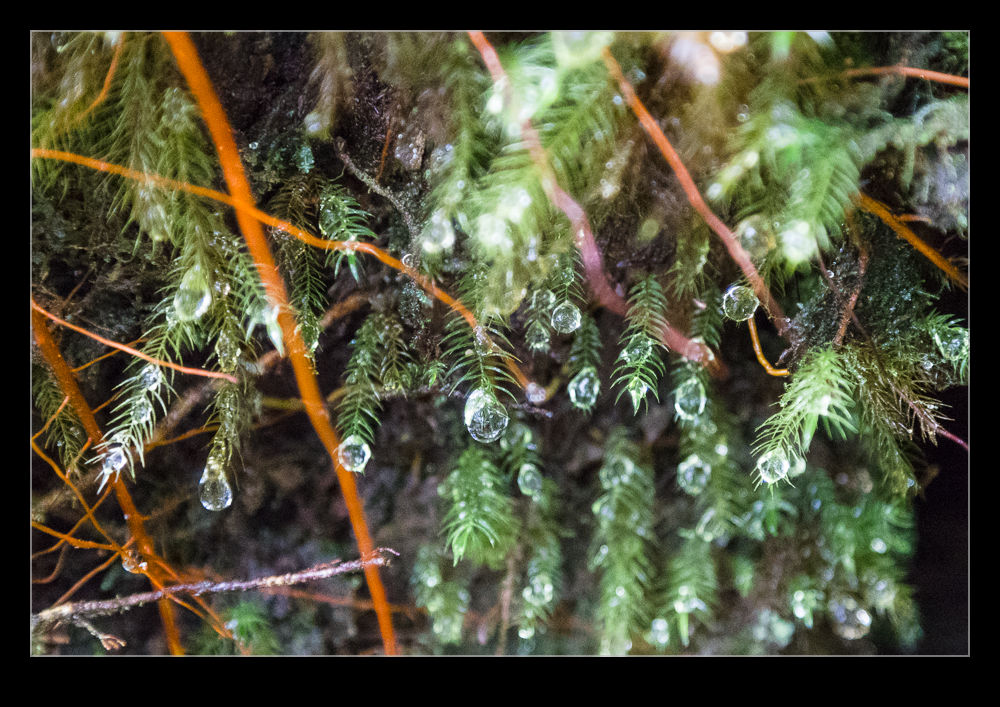 Rain forest conditions do tend to mean lots of moisture in the air. That much moisture means perfect conditions for the growth of lichen. The lichen do a great job of collecting the moisture from the air to keep them well watered. The way the water drops form on the surface of the plant can be really interesting. Just a small vibration would send them dropping to the plant life below but, for now, they were safe.
Rain forest conditions do tend to mean lots of moisture in the air. That much moisture means perfect conditions for the growth of lichen. The lichen do a great job of collecting the moisture from the air to keep them well watered. The way the water drops form on the surface of the plant can be really interesting. Just a small vibration would send them dropping to the plant life below but, for now, they were safe.

